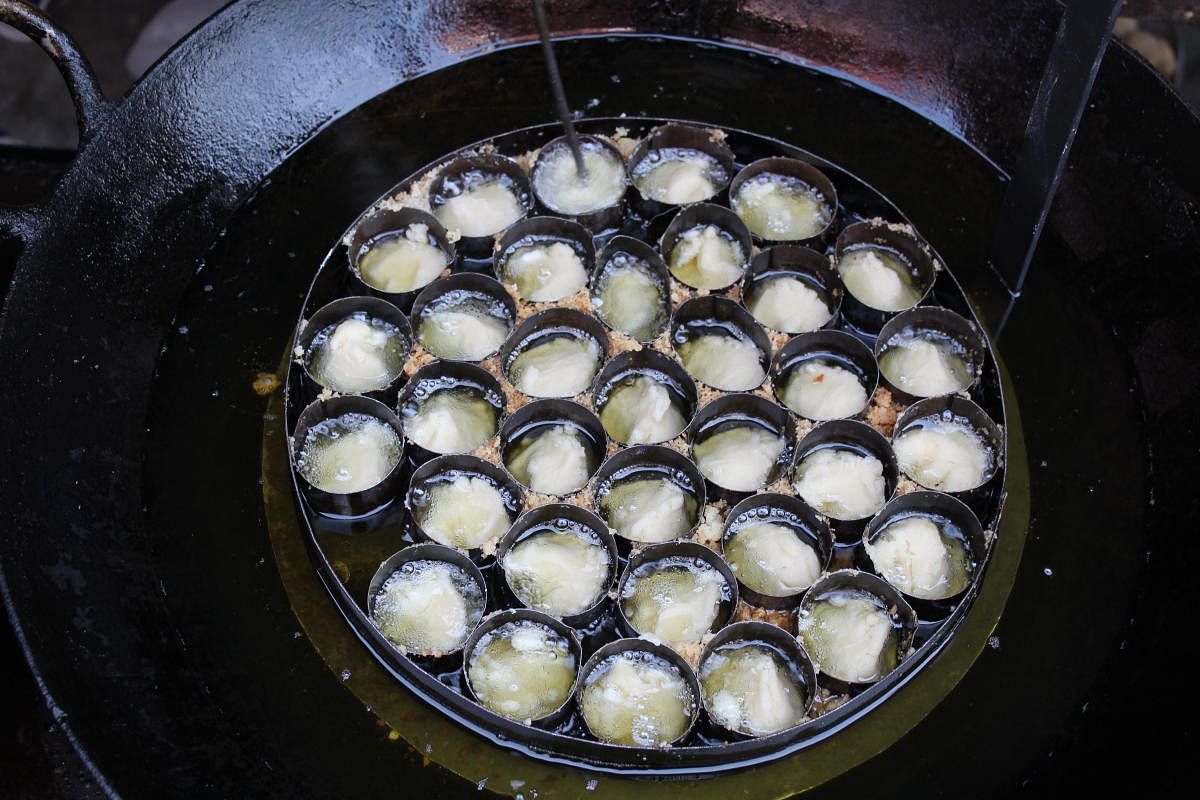

During the traditional festival of Lohri, an age-old ritual to prepare Khajoor is revived in almost every sweet shop in the holy city of Amritsar. One of the most awaited winter delicacies, Khajoor is made using simple and very few ingredients such as white flour, clarified butter and of course sugar.
For people in Amritsar, it is not only a symbol of winter but also of the festival which brings families and friends together around bonfires and makes the sky colourful with kites. Regulars here have their favourite places to buy them too, mostly in the walled pocket of the town, from petit shops functional since the early 1900s.
The joy of watching the sweet being prepared offers an insight into how it gets its unique flavour as sweetmeat makers prepare it in the open using coal as a fuel. Each batch, usually of 1 kg, takes 20-25 minutes to prepare. “At first, the dough is prepared which takes nearly an hour as it should be very soft and creamy. Sugar (powdered only) is mixed along. It is then given shape leaving it hollow from inside, before finally dipping it in hot clarified butter over the coal fire. It is then allowed to turn brownish and after resting it for a few minutes it is distributed into small pieces. There are also those who use steel moulds to prepare but in Amritsar, we prefer our own version,” says Vijay Kumar, a chef at the old fashioned Manohar Sweets, one of the pre-Partition shops in Guru Bazaar.
It costs anywhere between Rs 150 and Rs 400 for a kg, and if chefs are to be believed, ‘try it when it’s just prepared’ for the warmth it carries. This delicacy has a shelf life of 3-4 months. “It’s nearly a 150-year-old sweet which originated in the walled city of Amritsar. Since it’s a winter speciality, it was aptly promoted as a dessert that warms one up besides fuelling one with instant energy. Even the British were fond of it. If you see it in any other town of Punjab or in the neighbouring states, the recipes flowed from Amritsar,” shared Arvinder Singh Chamak, a writer and poet, from the city. According to Sukhdev Singh Sohal, a retired history professor of Guru Nanak Dev University of the city, “though Khajoor has roots in Amritsar, it shares the name of Khajoor fruit (dates) making one believe that it might have some Middle Eastern connection as well.”